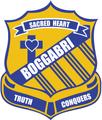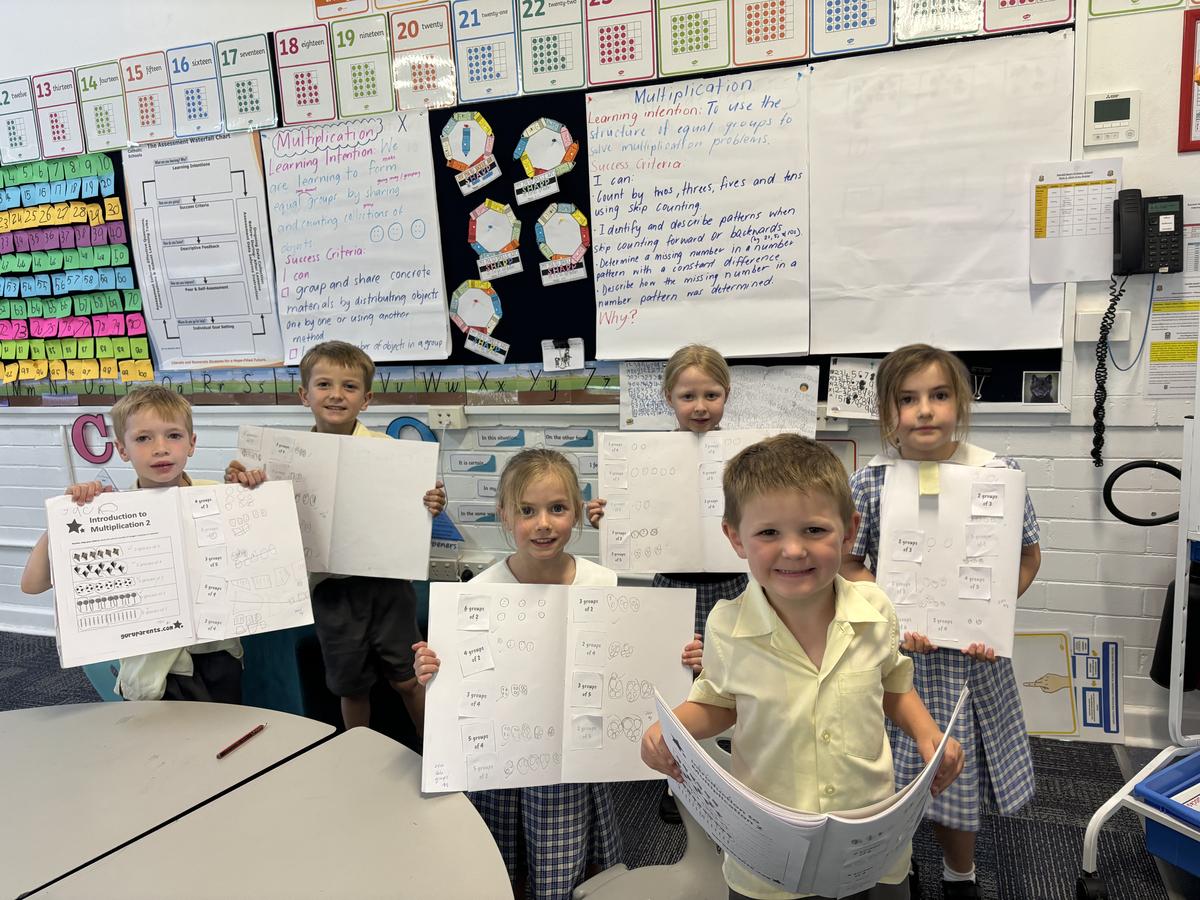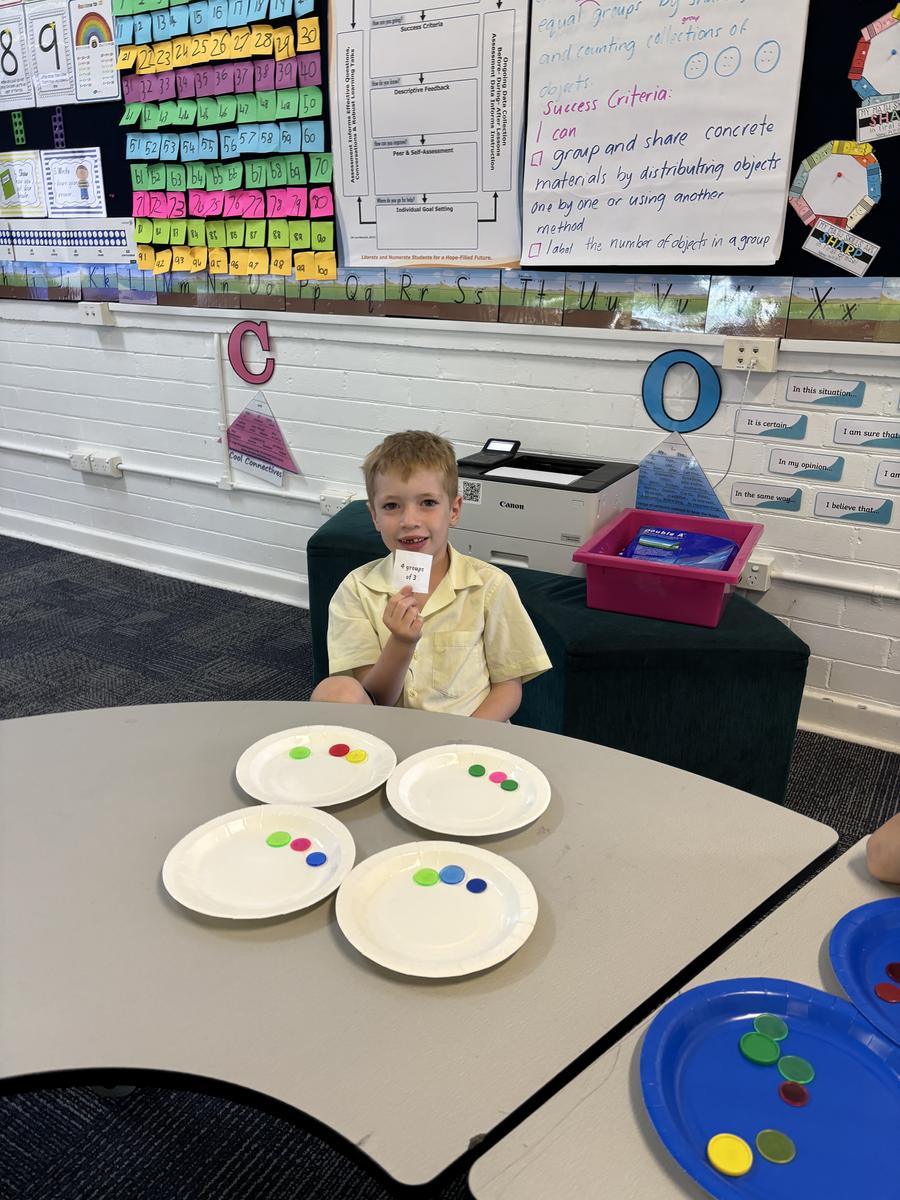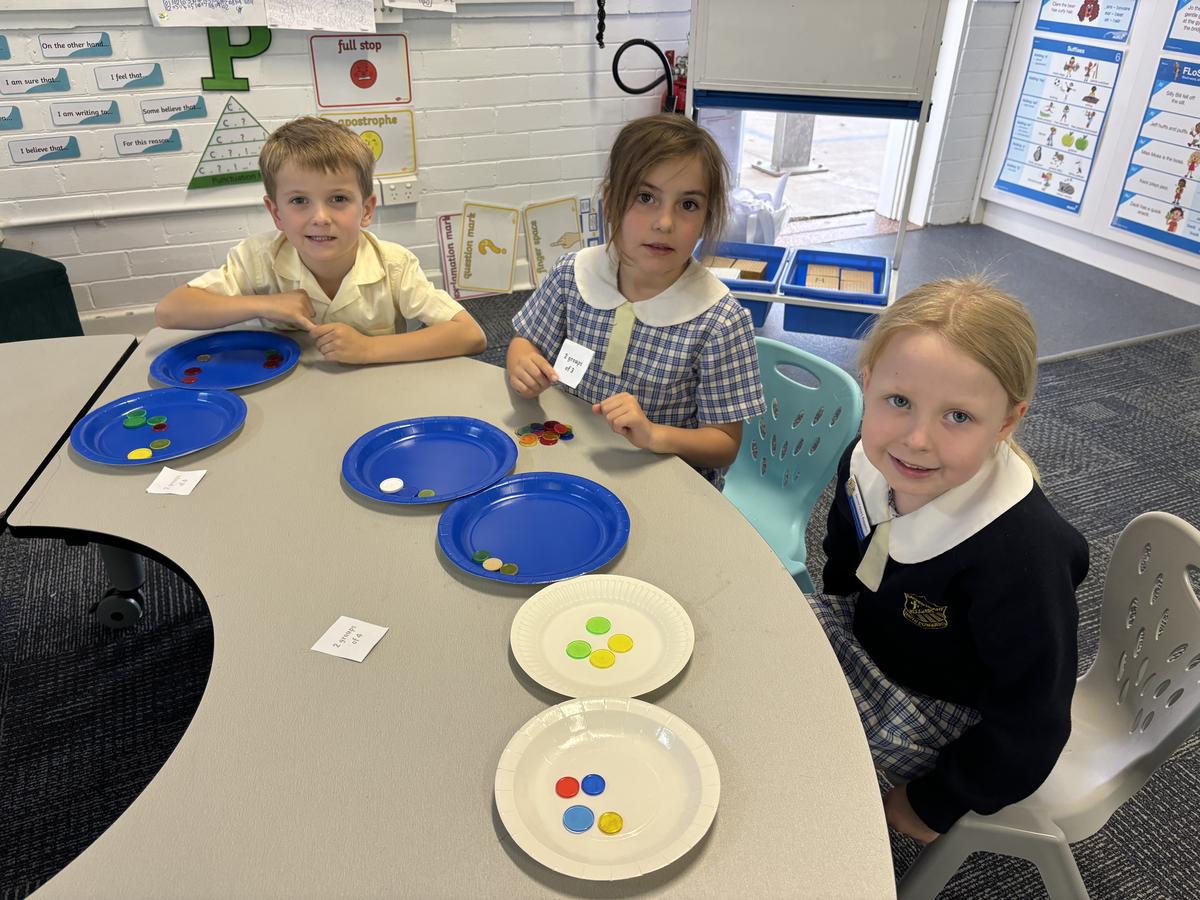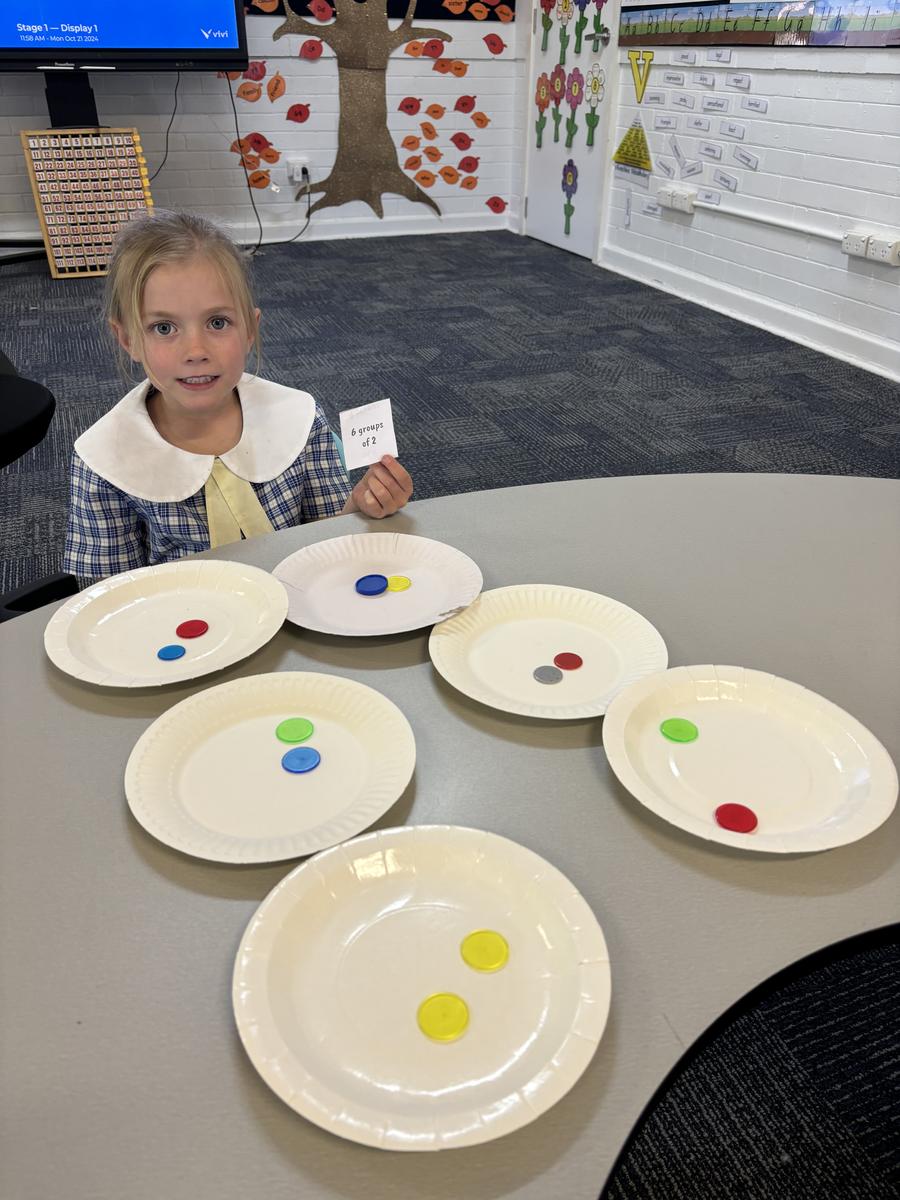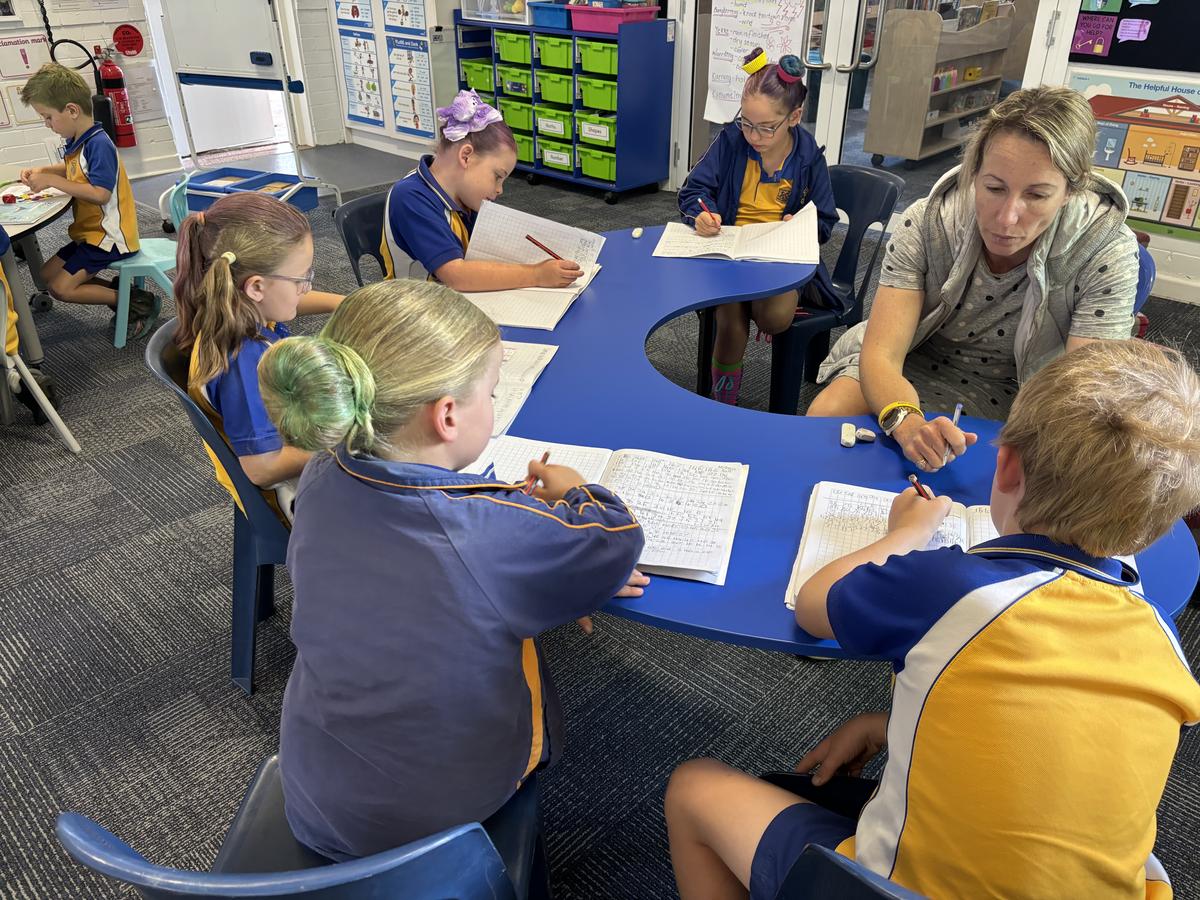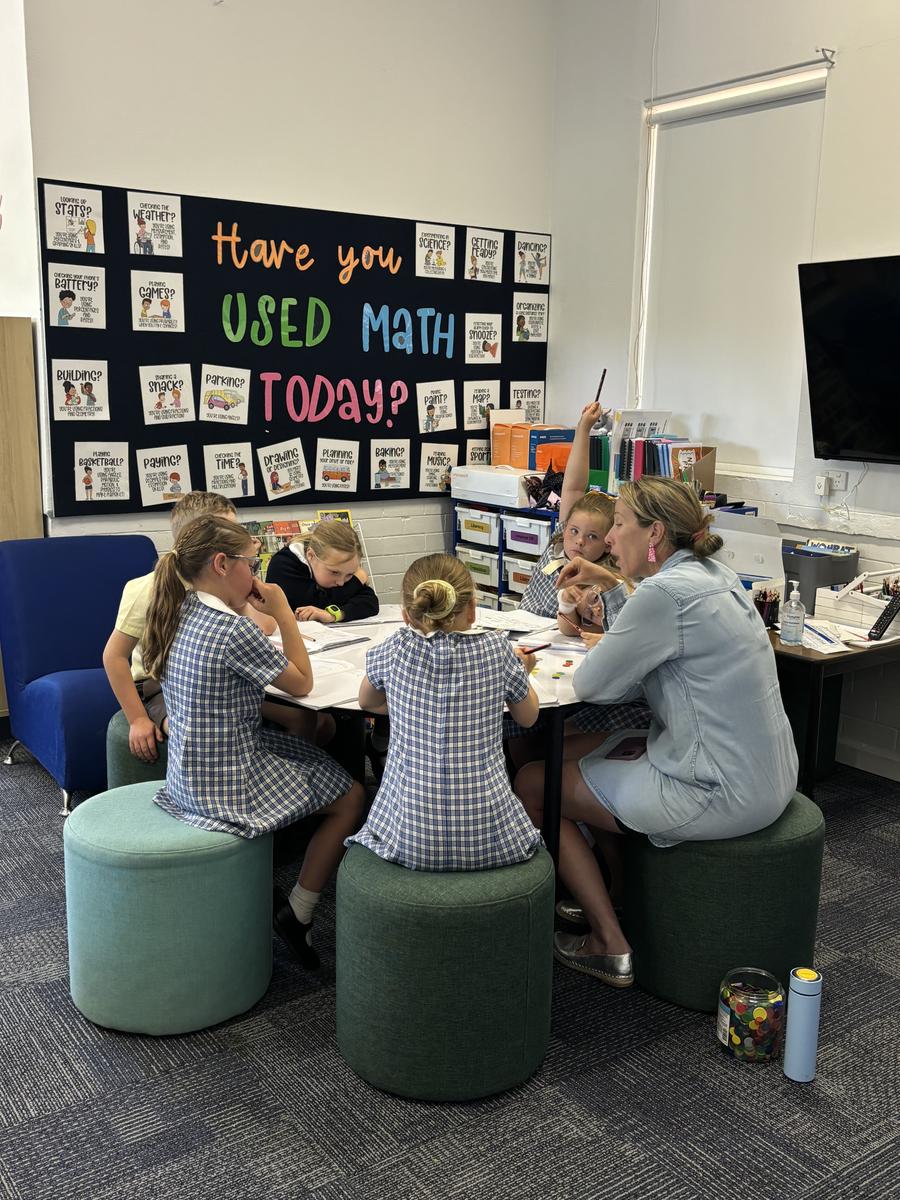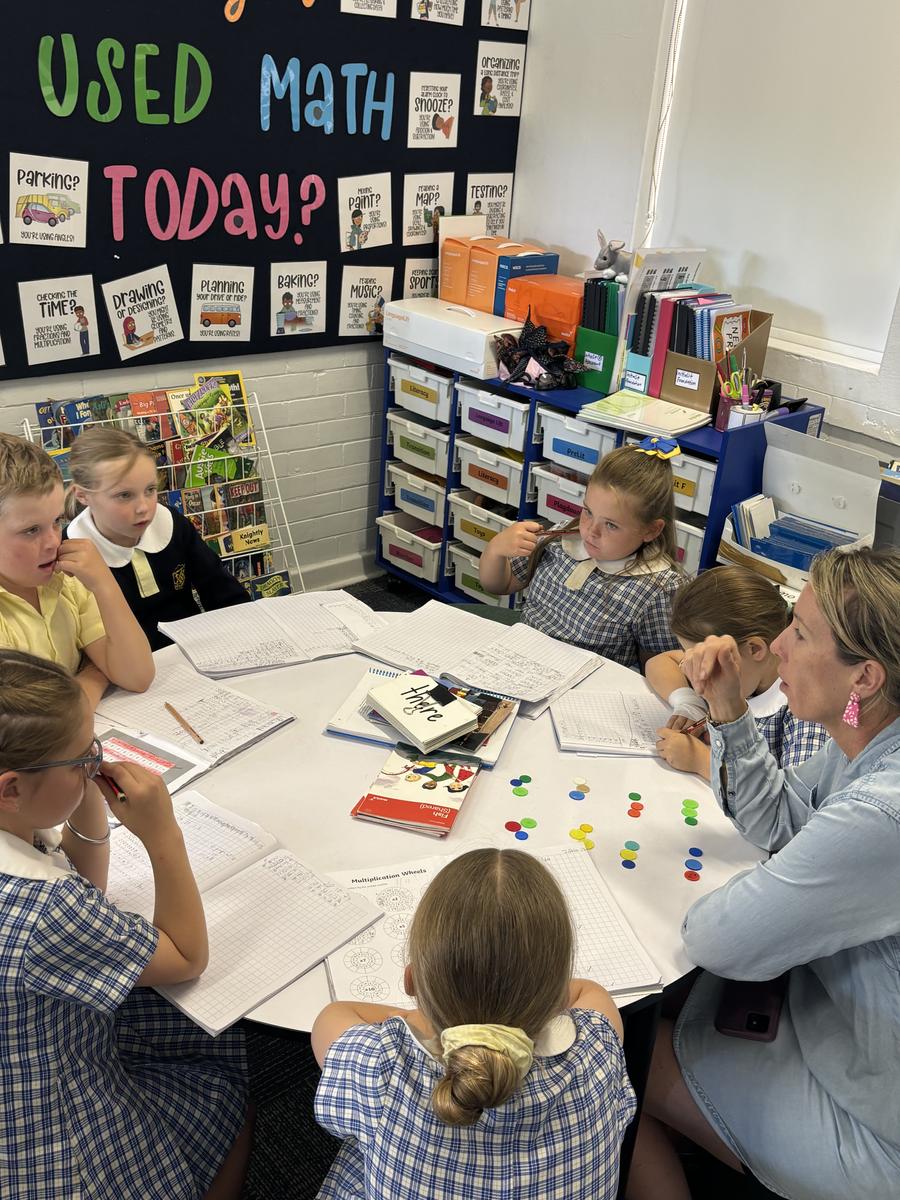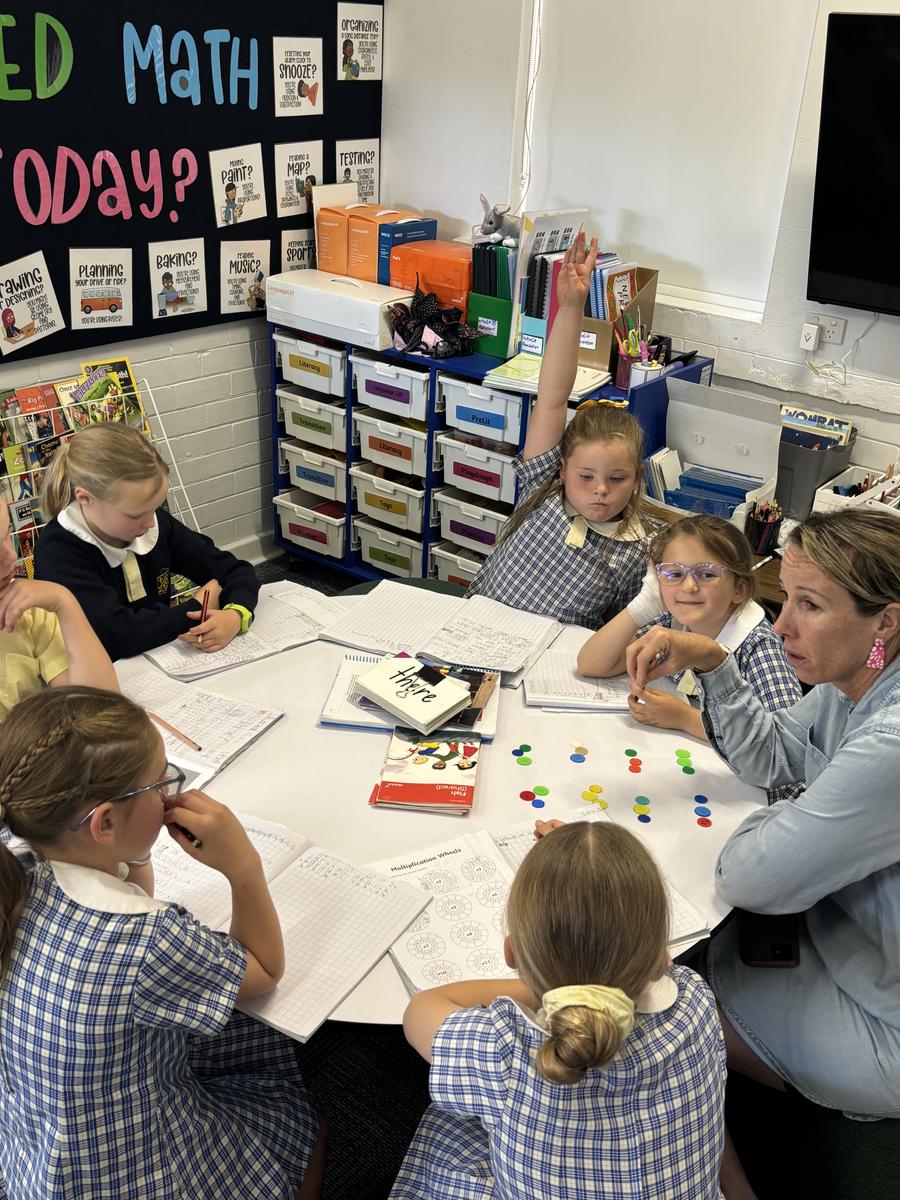Spotlight on the Classroom
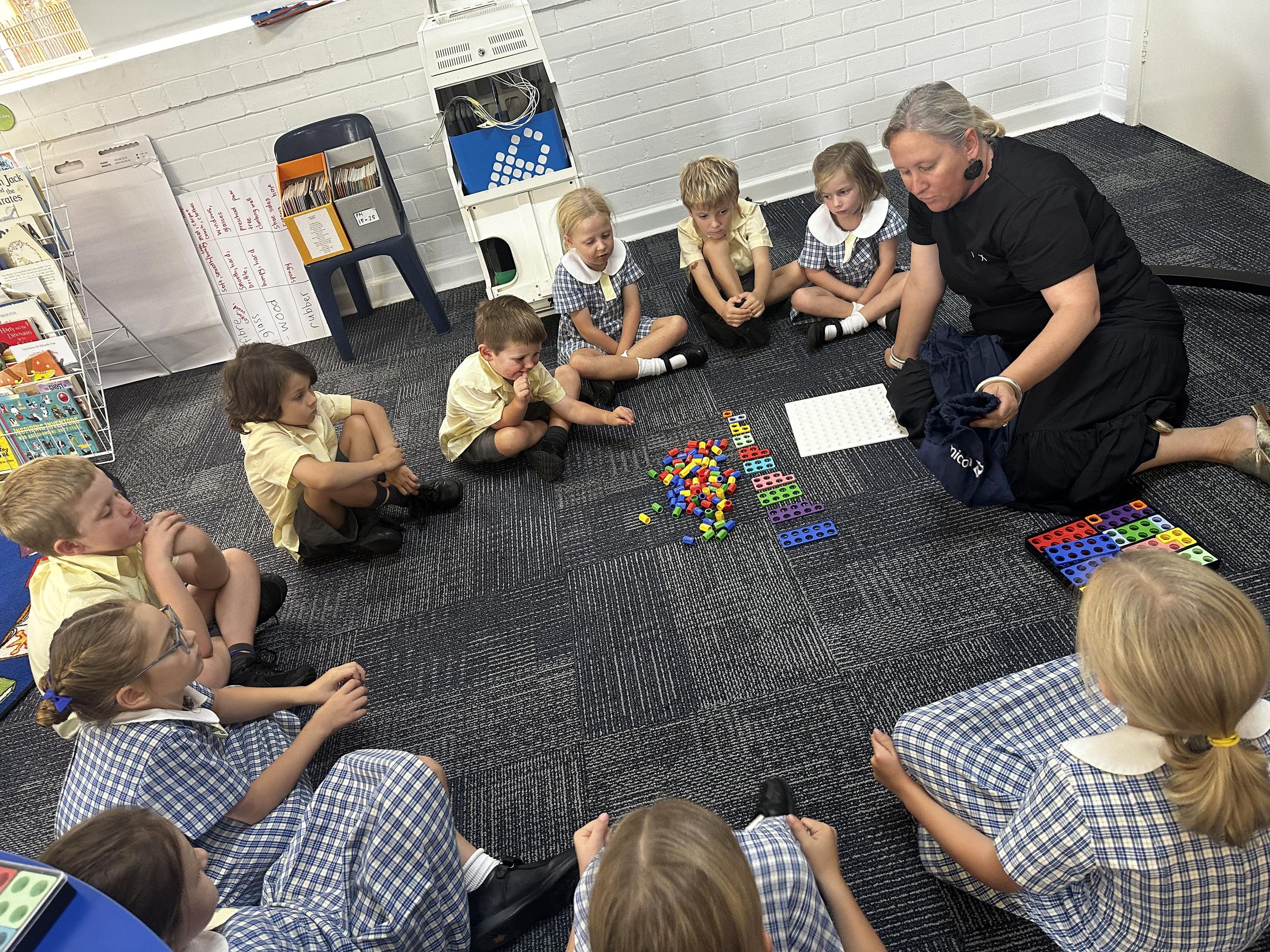
SPOTLIGHT ON K-2
ES1 - Forming Groups
Why is it important?
Give it a reason:
The process of sharing objects equally and putting shared objects back together to form one collection develops students’ understanding of the link between multiplication and division and provides the foundation for a conceptual understanding of their inverse relationship. In Early Stage 1, students develop strategies for forming groups based on the structure and pattern of numbers as countable units. Strategies related to forming groups in the early years are foundational to the multiplicative structure of number (Mendes and Ferreira 2008).
Below Early Stage 1 students enjoy making equal groups by rolling a die to determine how many mugs they will use and how many marshmallows will be in each mug.
TIPS FOR PARENTS: Kinder
Putting objects together in equal groups helps children to understand early multiplication. Encourage your child to move objects to create equal groups. There are lots of opportunities to make and show equal groups in everyday life. Think about events when sharing is needed, and ask your child to help you create equal groups.
• Sharing equal amounts of food
• Baking biscuits or cupcakes where the mixture is shared equally
• Building 2 Lego towers of the same height
• Giving equal amounts of time to play with a toy
• Organising your toys into equal groups.
• Sharing out cards for a card game
One of the best ways to explore equal groups is to make unequal groups and problem-solve together on how to make them equal.
Year 1 and 2 - Multiplication
Why is it important?
Give it a reason:
Forming groups helps students progress from counting by ones to skip counting and using repeated addition. These are important steps towards the idea of coordinating units and understanding multiplication.
Stage 1 and 2 students use their knowledge of skip counting to assist in their multiplication questions.
TIPS FOR PARENTS: Stage 1 and 2
Forming groups focuses on:
-using groups to solve multiplication problems.
You can help your Year 1 and Year 2 child at home by:
-playing skip counting games or taking turns to count by 2s, 3s, 5s, and 10s
-using 5c, 10c or $2 coins to skip count money
-drawing a skip-counting hopscotch path with chalk. Use the hopscotch path in reverse to skip count backwards.
-Using sticky dots, textas, M&Ms, playdough, or Lego to make groups and get children to write the repeated addition facts to match.
-Use paddle pop sticks to create groups and add them together to multiply and find your answer.
-Try a 100s chart and colour in the numbers as you add on top of them to find the answer to your question.
-Can you find any patterns?
-Arrays are a grid-like pattern. Explore around you and find arrays! It could be a bookshelf, the kitchen drawers or the plates laid at the dinner table. Work out what these arrays are (their rows and columns) and their answer if they were multiplied.
-A fun way to show arrays is to bake some muffins or cookies and multiply the rows and columns to work out how many you will make.
-Make arrays with items around the house. Challenge yourselves to see who can make the arrays in the fastest time!
